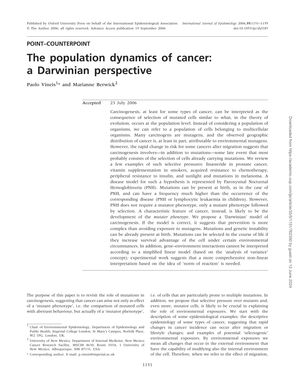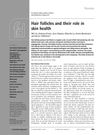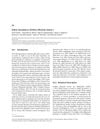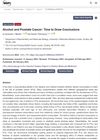The Population Dynamics of Cancer: A Darwinian Perspective
September 2006
in “
International journal of epidemiology
”

TLDR Cancer development is like natural selection, involving mutated cells and environmental factors.
The document proposed a Darwinian model of carcinogenesis, suggesting that cancer development could be viewed as the selection of mutated cells within a multicellular organism, similar to natural selection in populations. It highlighted that many carcinogens are mutagens and that environmental factors contribute to cancer distribution. The rapid change in cancer risk after migration indicated that carcinogenesis involves not just mutations but also the selection of pre-mutated cells. Examples of selective pressures included finasteride in prostate cancer, vitamin supplementation in smokers, and sunlight in melanoma. The model emphasized that cancer prevention is complex, as genetic mutations and instability can be present from birth and selected throughout life based on environmental interactions, necessitating a non-linear approach to understanding gene-environment interactions.




